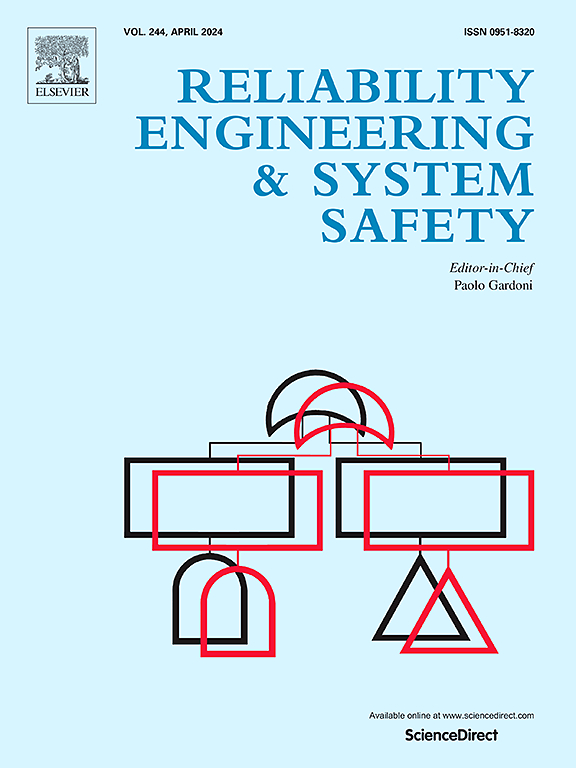Benchmark transformation neural network for health indicator construction under time-varying speed and its application in machinery prognostics
IF 9.4
1区 工程技术
Q1 ENGINEERING, INDUSTRIAL
引用次数: 0
Abstract
A health indicator (HI) is usually applied to predict the remaining useful life (RUL) of machinery. The current HI construction methods typically only focus on constant operating conditions (such as speed or load), rendering them ineffective for variable-speed conditions. To address this gap, this paper proposes a HI construction method for machines under time-varying speed conditions based on benchmark transformation neural networks (BTNN). First, the baseline speed range is determined, and the baseline state observations are identified. Then, with the identified baseline observations, a performance degradation model is established via the double exponential function. Next, BTNN is innovatively proposed using the fitted degradation model, the monitoring state, and speed data to adaptively perform the complex nonlinear mapping from non-baseline observations to baseline values, avoiding the problem of selecting different baseline transformation functions. Compared with the HI constructed by a transformation function and the dimensionless HI, the proposed method unifies state observations at various speeds onto the baseline speed through BTNN, enhancing the comprehensive performance of HI. Comparative experiments on the RUL prediction of turbofan engines and wind turbine bearings reveal that the HI extracted by BTNN exhibits stronger prognosis capabilities than other classical and advanced HIs.
求助全文
约1分钟内获得全文
求助全文
来源期刊

Reliability Engineering & System Safety
管理科学-工程:工业
CiteScore
15.20
自引率
39.50%
发文量
621
审稿时长
67 days
期刊介绍:
Elsevier publishes Reliability Engineering & System Safety in association with the European Safety and Reliability Association and the Safety Engineering and Risk Analysis Division. The international journal is devoted to developing and applying methods to enhance the safety and reliability of complex technological systems, like nuclear power plants, chemical plants, hazardous waste facilities, space systems, offshore and maritime systems, transportation systems, constructed infrastructure, and manufacturing plants. The journal normally publishes only articles that involve the analysis of substantive problems related to the reliability of complex systems or present techniques and/or theoretical results that have a discernable relationship to the solution of such problems. An important aim is to balance academic material and practical applications.
 求助内容:
求助内容: 应助结果提醒方式:
应助结果提醒方式:


